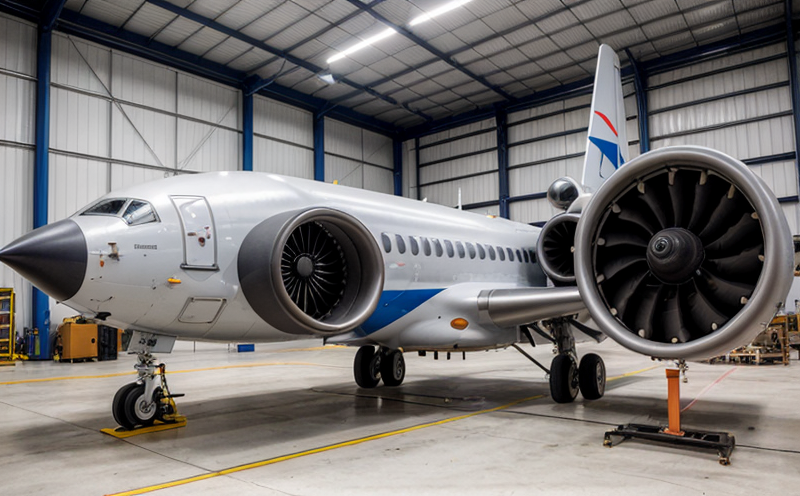Wind Tunnel Acoustic Testing of Airframes
In aerospace and defense engineering, ensuring that airframes operate efficiently and safely within their acoustic environments is critical. Wind tunnel acoustic testing provides a controlled environment to simulate the complex conditions encountered by an aircraft during flight, allowing engineers to assess how noise impacts both internal cabin comfort and external operational performance.
Acoustic tests in wind tunnels are particularly important for aerospace applications where sound levels can significantly affect passenger experience and crew health. The primary goal of this testing is to determine the acoustic radiation characteristics of airframes under simulated flight conditions, which helps in optimizing design parameters such as shape, material selection, and geometry to minimize noise generation.
The process involves placing an accurate model of the airframe into a wind tunnel where it can be exposed to controlled airflow conditions. Microphones are strategically placed around the model to capture sound pressure levels at various points. This setup allows for detailed analysis of how different components contribute to overall noise emissions, enabling continuous improvement in aircraft design.
One key aspect of this testing is understanding the role of boundary layers and turbulence generated by the airflow over the surface of the airframe. These factors significantly influence the acoustic environment within the cabin and around the aircraft. By carefully analyzing these variables, engineers can make informed decisions about material choices that reduce noise without compromising structural integrity or aerodynamics.
Another critical component is understanding the impact of various operational scenarios on noise levels. For instance, takeoff and landing phases produce significantly higher sound pressure levels compared to cruise conditions. Testing during these phases helps identify potential areas for improvement in terms of both design modifications and operational procedures.
Following completion of the test, comprehensive reports are generated detailing findings from each measurement point along with recommendations for further refinement if necessary. These reports serve as valuable tools not only for current projects but also contribute towards knowledge sharing across teams involved in future developments within the industry.
The accuracy and reliability of wind tunnel acoustic tests directly influence the success rates of new product launches by providing early insights into areas requiring attention. This ensures that products meet strict regulatory requirements while simultaneously enhancing customer satisfaction through superior sound quality.
Frequently Asked Questions
Why Choose This Test
- Provides precise control over environmental factors to simulate real-world flight conditions accurately.
- Offers detailed insights into the acoustic behavior of airframes, aiding in design optimization and compliance with noise regulations.
- Promotes innovation by allowing iterative testing and refinement before full-scale production begins.
The ability to conduct such tests ensures that aerospace products not only meet but exceed industry standards regarding environmental impact. Moreover, it fosters a culture of continuous improvement that benefits both manufacturers and end-users alike.
Quality and Reliability Assurance
Ensuring high-quality outcomes in wind tunnel acoustic testing is essential for maintaining the integrity of aerospace products throughout their lifecycle. Rigorous quality assurance measures ensure that every test conducted adheres to stringent international standards, thereby enhancing reliability and performance.
Our state-of-the-art facilities incorporate advanced technology to achieve precise measurements and accurate data interpretation. This commitment to excellence guarantees that our clients receive reliable results that stand up to scrutiny by regulatory bodies worldwide.
Environmental and Sustainability Contributions
- Achieves compliance with international noise regulations, contributing positively to global environmental efforts.
- Promotes quieter operations which reduce fuel consumption and associated emissions during testing phases.
- Fosters sustainable development by providing solutions that enhance overall efficiency while minimizing adverse effects on the environment.
By integrating these practices into our services, we contribute towards building a more sustainable future for all stakeholders involved in aerospace manufacturing processes.





